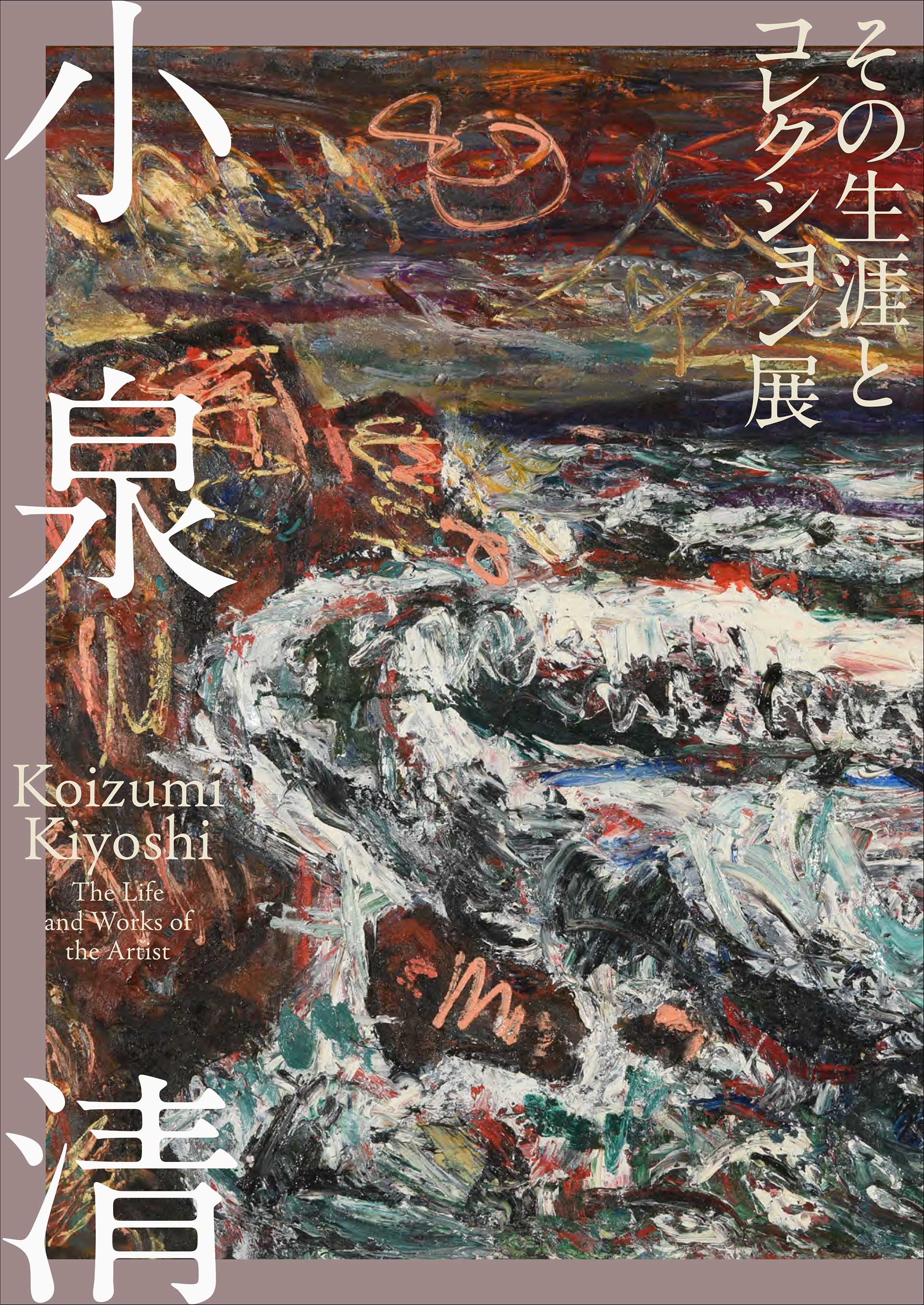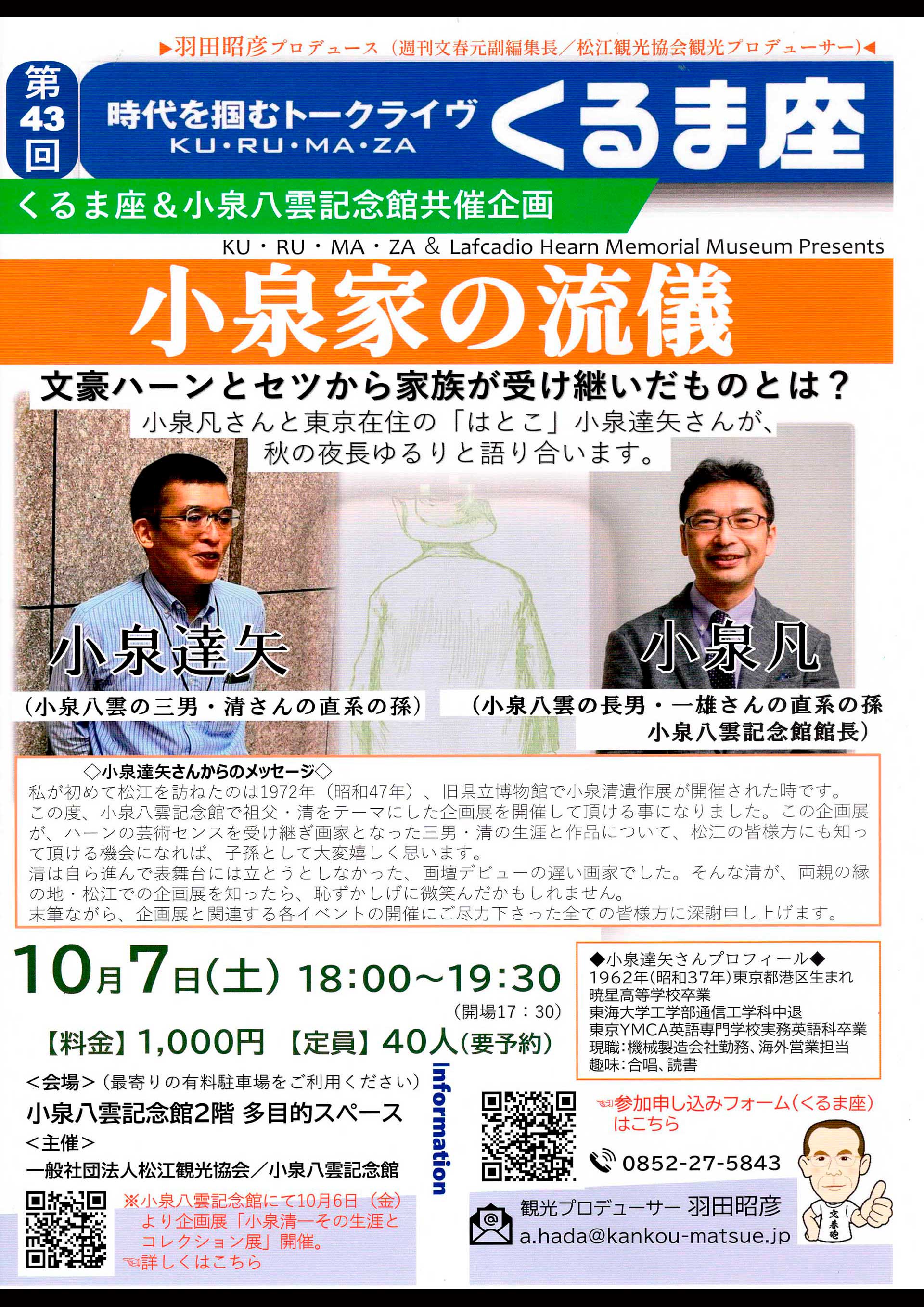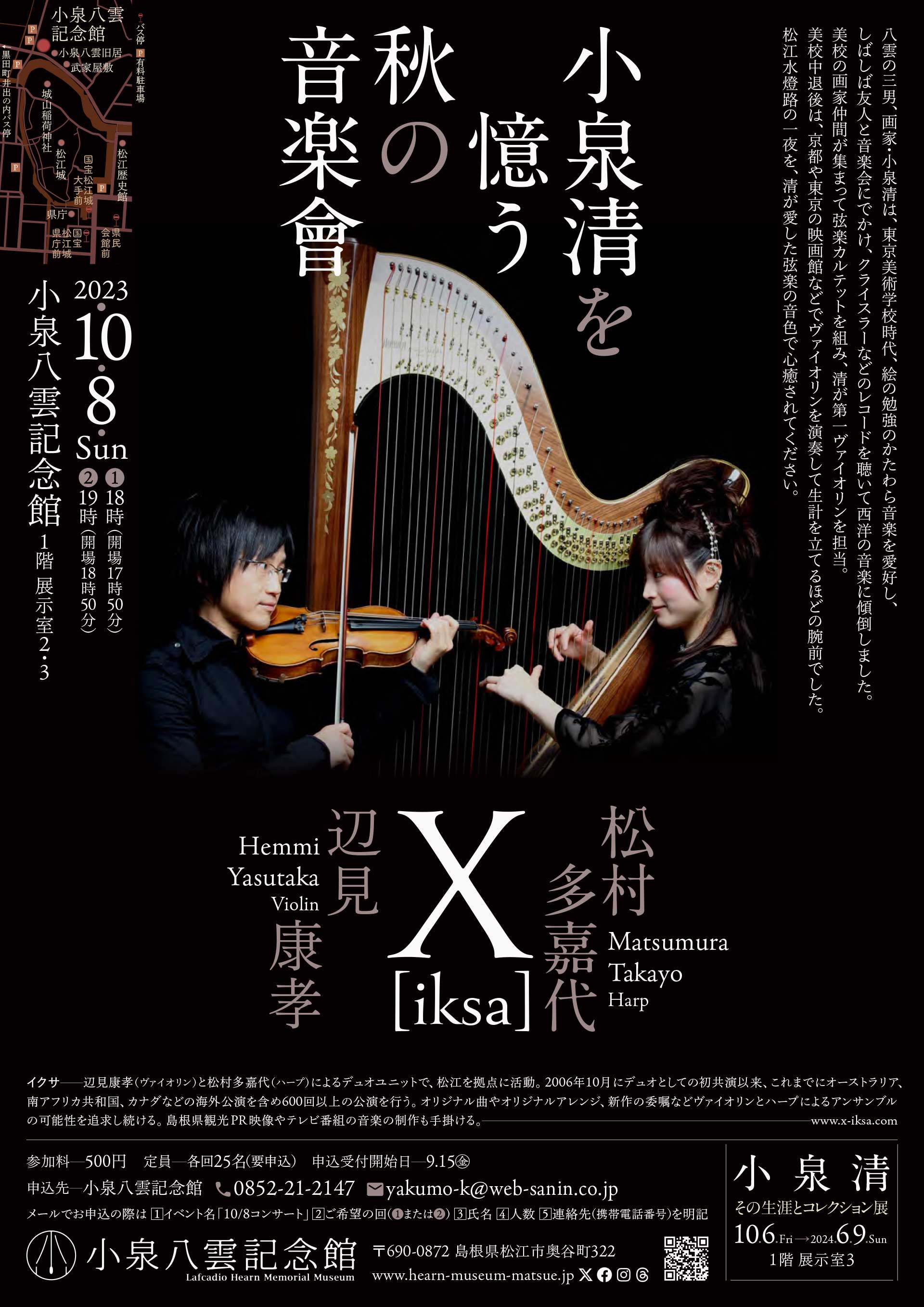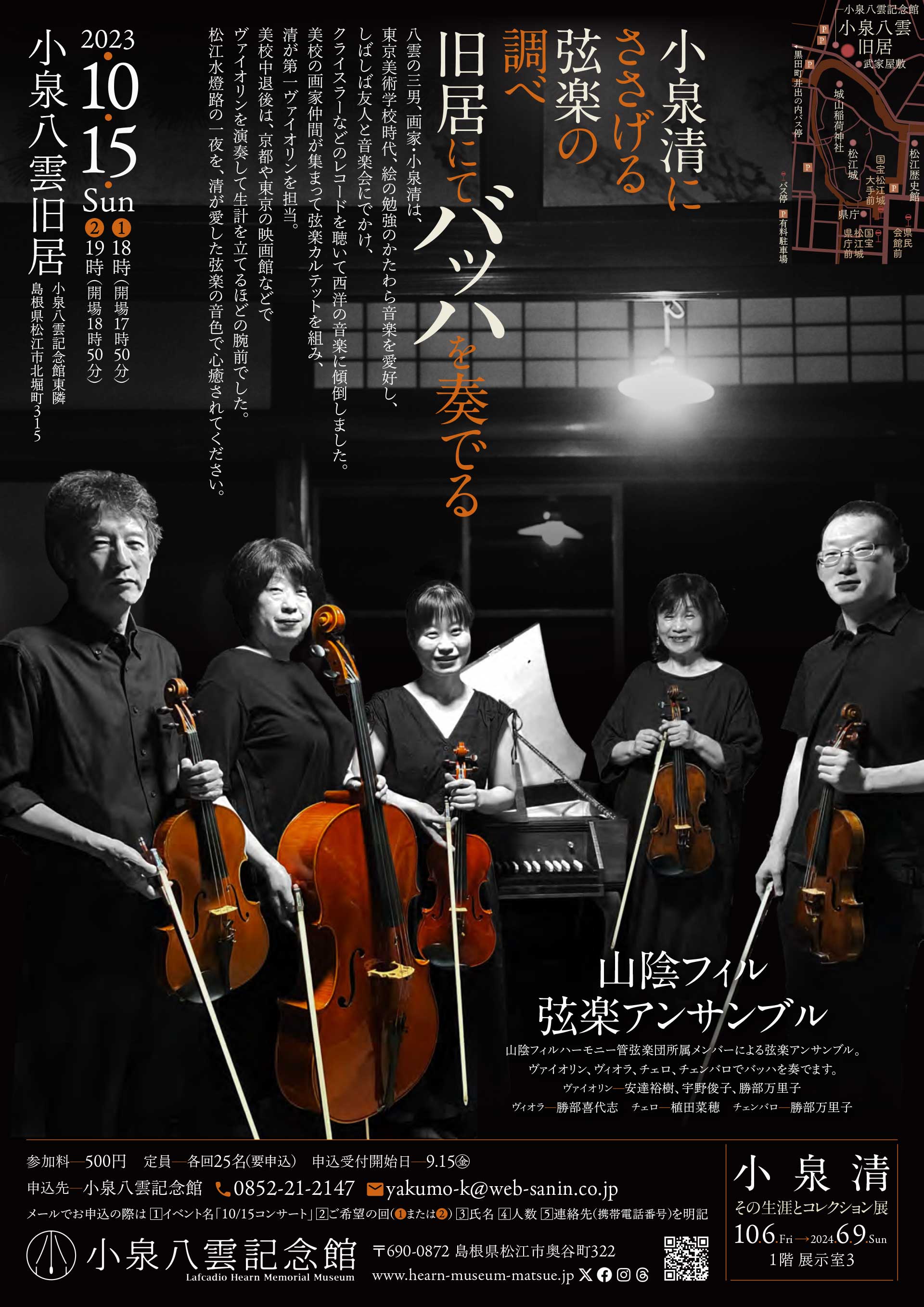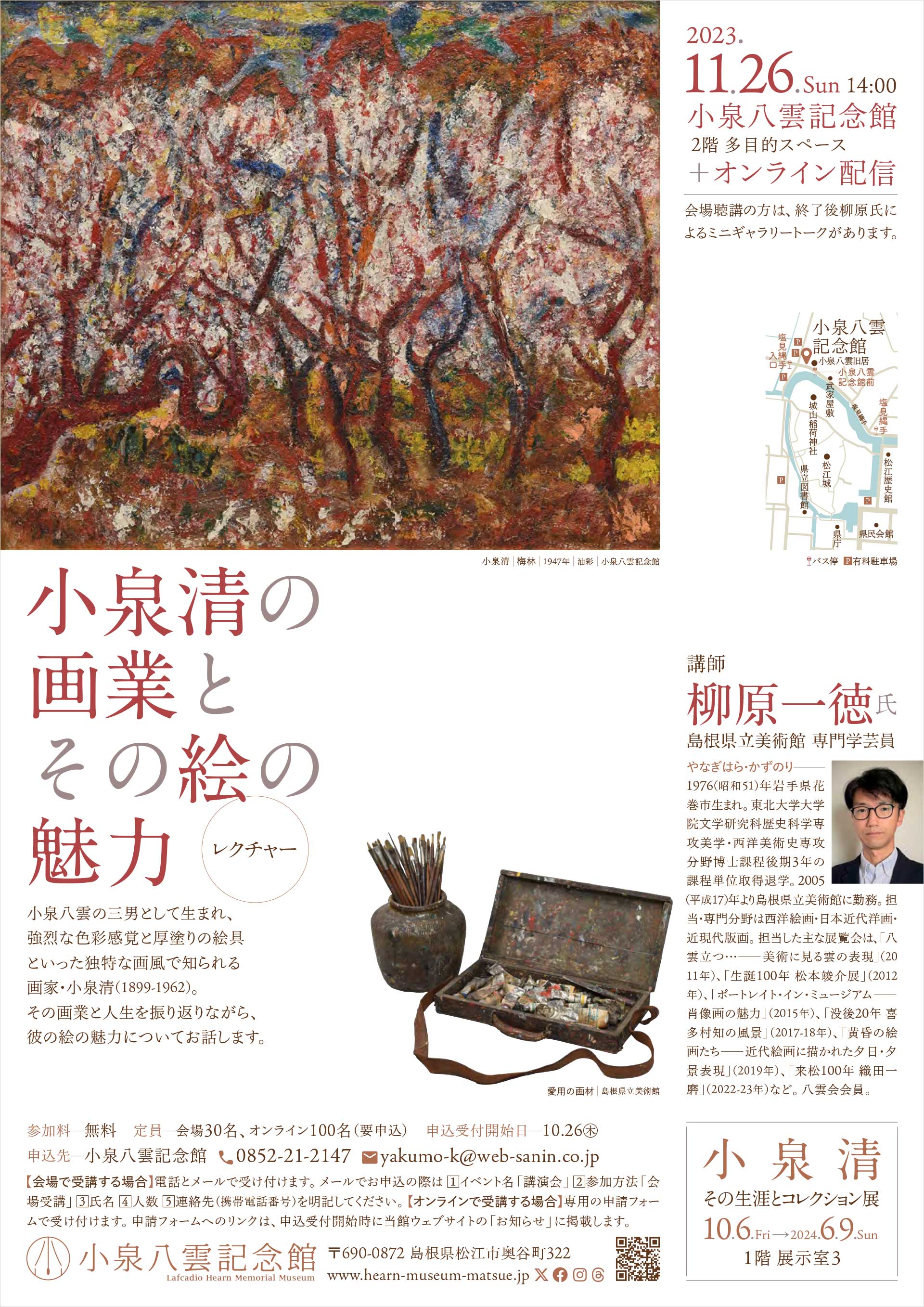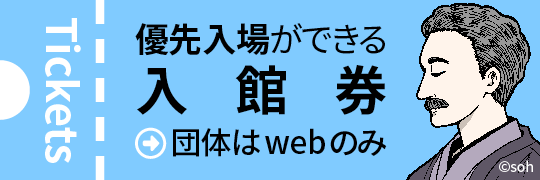企画展
小泉清—その生涯とコレクション展
Exhibition
Koizumi Kiyoshi—The Life and Works of the Artist
2023年10月6日(金)―2024年6月9日(日)
展示室3
主催:小泉八雲記念館
共催:一般社団法人八雲会、松江市
協力:島根県立美術館、早稲田大学會津八一記念博物館、池田記念美術館、新潟市會津八一記念館、小泉達矢氏、小泉家
後援:朝日新聞松江総局、毎日新聞松江支局、読売新聞松江支局、日本経済新聞社松江支局、産経新聞社、共同通信社松江支局、時事通信社松江支局、山陰中央新報社、中国新聞社、島根日日新聞社、NHK松江放送局、TSKさんいん中央テレビ、BSS山陰放送、日本海テレビ、山陰ケーブルビジョン、エフエム山陰、エフエムいずも
Friday October 6, 2023–Sunday June 9, 2024
Exhibition Room 3
Organizer: Lafcadio Hearn Memorial Museum
Co-organizers: The Hearn Society / Matsue City
Cooperation: Shimane Art Museum / Aizu Museum / Ikeda Art Museum / Aizu Yaichi Memorial Museum / Koizumi Tatsuya / The Koizumi Family
Support: Asahi Shimbun Matsue office / Mainichi Shimbun Matsue office / Yomiuri Shimbun Matsue office / Nihon Keizai Shimbun Matsue office / Sankei Shimbun / Kyodo News Matsue office / Jiji Press Matsue office / The San-in Chuo Shimpo Newspaper Co., Ltd. / Chugoku Shimbun / Shimane Nichi-nichi Newspaper / NHK Matsue / TSK Sanin Chuo TV / Broadcasting System of San-in Inc. / Nihonkai Telecasting Co., Ltd. / San-in Cable Vision / FM San-in / FM Izumo
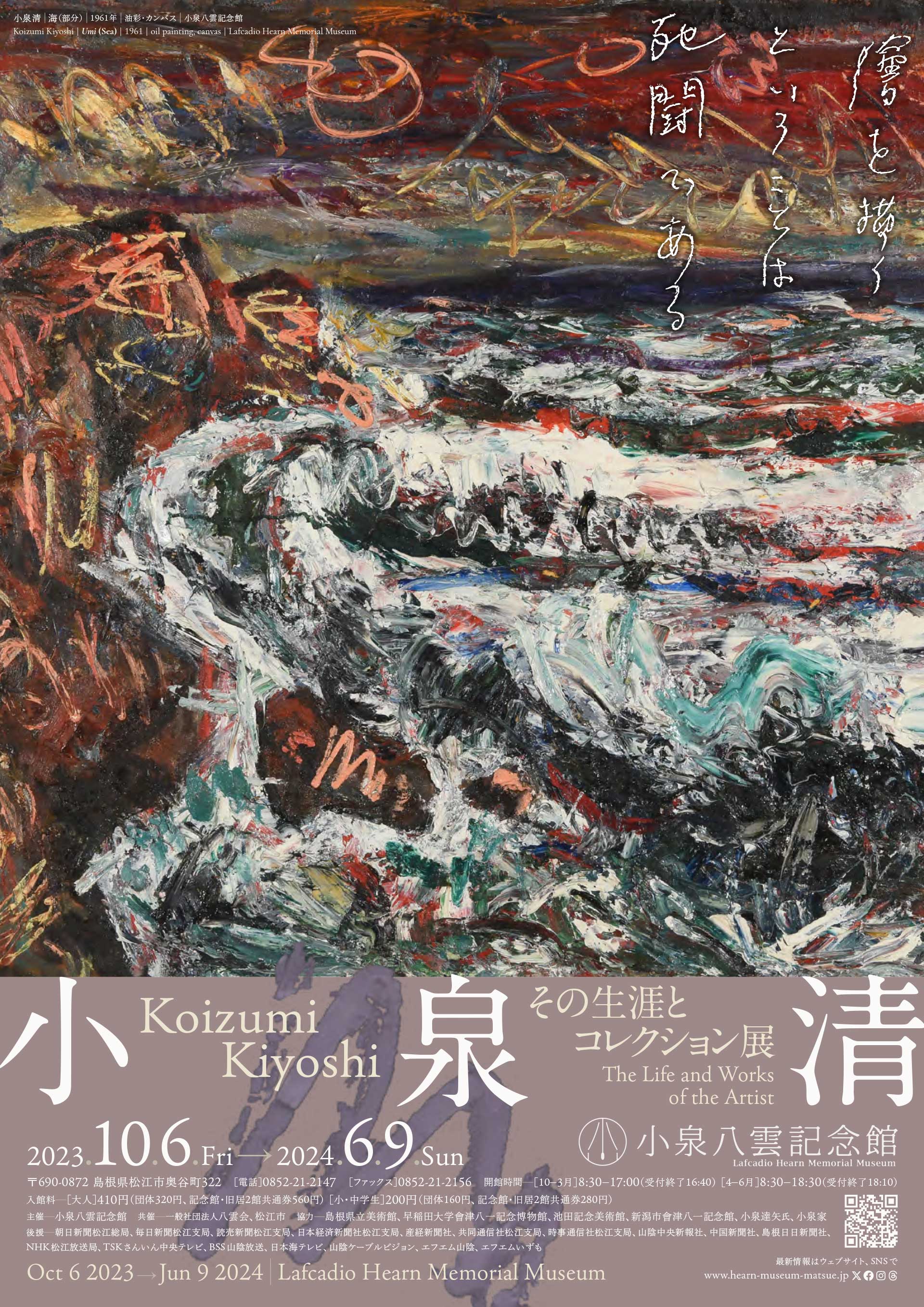
1899年、画家・小泉清(1899.12.20-1962.2.21)は、小泉八雲の三男として誕生した。4歳の秋に突然父が他界。早稲田中学時代、清は八雲の教え子・會津八一によってその才能を見出され、東京美術学校西洋画科に入学した。その後紆余曲折あったものの、父の伯父リチャードや父八雲の芸術的センスを受け継ぎ、画家として個性的な一生を過ごした。
清は、46歳のとき第1回新興日本美術展で読売賞を受賞し、画壇に名を連ねた。フォーヴィズムの影響を受けたかのような独特の画風で、以来、その激しい色彩と荒々しいタッチが彼のスタイルとなった。50歳のとき、父八雲と母セツの思い出の地「松江」を初めて訪問し、島根半島や隠岐島をめぐり多くのスケッチを描いた。61歳のとき、最愛の妻シヅが急逝し、それから2か月後の1962年2月、「自分の意思ではどうにもならない。血が複雑すぎたのだろう」という遺言を残し、妻を追うように自らの命を絶った。
清は生涯にわたり、西洋的なものと東洋的なものが自分の中で対立していることに苦悶し続けた。日本人であることに徹しようとする清に、しばしば現れる西洋的な側面。それは、自分の中にある父を意識させ、それを克服するかのようにもがき苦しみ続けた。そんな清だが、父の肖像を2枚残している(記念館所蔵)。また、没後、清のアトリエから見つかった八雲の遺髪は、現在小泉八雲記念館の遺髪塔に納められている。
複数の人種や文化が接触し混淆することを評価した八雲と、複数の血の融合に苦悩した清。だが、父子の生き方には、まぎれもなく共通する何かがあった。それは二人の創作に対する生命の燃焼なのかもしれない。
この企画展では、八雲の三男として生まれながら、生涯二つの血のはざまで葛藤し続けた画家・小泉清の生涯を辿るとともに、小泉八雲記念館が所蔵する清の作品を一挙公開するものである。
The artist Koizumi Kiyoshi (December 20th, 1899–February 21st, 1962) was the third son of Lafcadio Hearn. He was four years old when his father passed away unexpectedly. During Kiyoshi’s time at Waseda Junior High School, Aizu Yaichi, a former student of Lafcadio Hearn, discovered Kiyoshi’s artistic talent, and he enrolled in the Western painting course at the Tokyo Fine Arts School. He experienced many setbacks, but he had inherited the artistic sense of both his great-uncle Richard and his father, and went on to live a unique life as a painter.
When Kiyoshi was 46 years old, he won the Yomiuri Award at the 1st Emerging Japanese Artists Exhibition and took his place in the art world. His characteristic painting style, which showed signs of Fauvism influence, was marked by his use of vibrant colours and the bold touch of squeezing paint from tubes onto the canvas. When he was 50 years old, he journeyed to Matsue, the place of memories of his father and mother, Setsu, for the first time. He went to the Shimane Peninsula and the Oki Islands, and produced many sketches. His beloved wife Shizu passed away when he was 61 years old, and two years later, in February 1962, as if to follow his wife, he took his own life. He left a note saying “Nothing will come of my intentions. Maybe my blood is too complicated.”
Throughout his life, Kiyoshi struggled with the conflict between his Western and Eastern identities. He chose to live a Japanese life, but his Western heritage sometimes predominated. He was aware of his father’s influence on himself as a creative person, but fought against it. Even so, he left two portraits of his father (Lafcadio Hearn Memorial Museum collection). After his death, hair of his deceased father was found in his atelier, and it is currently stored in a receptacle in the Lafcadio Hearn Memorial Museum.
While his father Lafcadio valued the meeting and mixture of multiple races and cultures, Kiyoshi suffered because of his cultural duality. Nevertheless, there is without doubt, a commonality in the lives of father and son,—their burning desire to dedicate their lives to creativity.
In this exhibition, we will introduce the life of Kiyoshi, the painter and third son of Lafcadio Hearn. He was an artist troubled throughout his life due to the fusion of his cultures. We will also exhibit his paintings in the Lafcadio Hearn Memorial Museum collection.
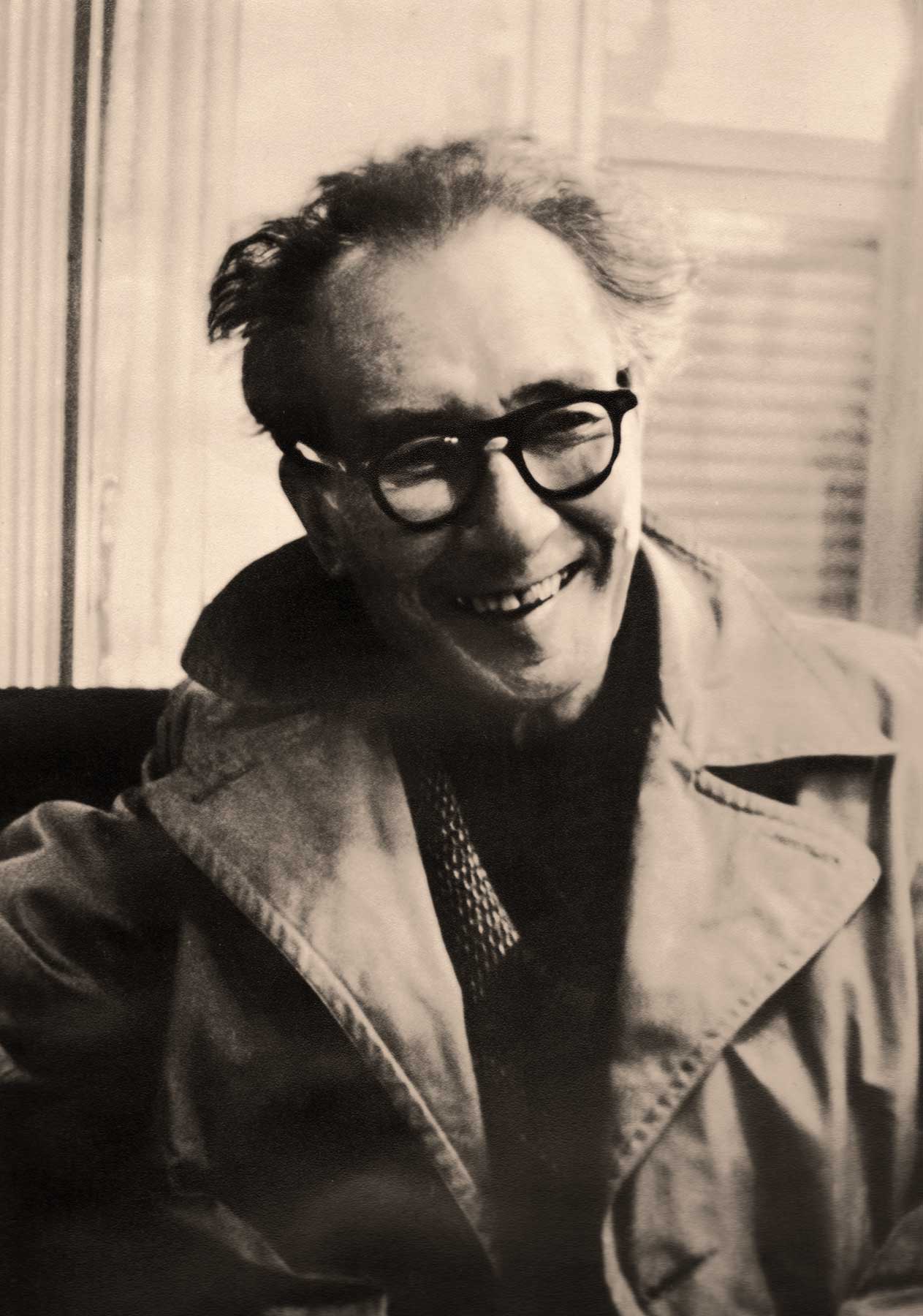
個人蔵
Koizumi Kiyoshi
Private collection
小泉清
1899年12月、小泉八雲(ラフカディオ・ハーン)の三男として東京市ヶ谷に生まれる。4歳のとき父が他界。早稲田中学時代、會津八一に絵の才能を見出され東京美術学校に進学。しかし肺を患い3年で美校を中退し、その後針シヅと結婚、しばらくは趣味のヴァイオリンで生計を立てた。1929年、母セツの遺産をもとに鷺宮に新居とともにアトリエを増設、再び絵筆をとるようになる。1946年、里見勝蔵らの勧めで読売新聞主催の新興日本美術展に初めて出品、読売賞を受賞し46歳にして画壇デビューを果たす。フォーヴィズムに影響を受けたかのような鮮やかな色彩と厚塗りの絵の具で独特のスタイルを作り上げた。1950年、父母ゆかりの地・松江を初めて訪問。61歳のとき最愛の妻シヅに先立たれ、2か月後の1962年2月、「血が複雑すぎたのだろう」と遺言を残し、妻の後を追うように自らの命を絶った。
Koizumi Kiyoshi
Koizumi Kiyoshi was born in Ichigaya, Tokyo, in December 1899. He was the third son of Lafcadio Hearn (Koizumi Yakumo). His father died when he was four years old. During Kiyoshi’s time at Waseda Junior High School, Aizu Yaichi discovered his artistic talent, and he enrolled in the Tokyo School of Fine Arts. However, he suffered from a disease of the lungs, and left the school after three years. He married Hari Shizu, and for a while, made a living through his hobby of playing the violin. In 1929, with an inheritance from his mother Setsu, he built a house in Saginomiya and extended his atelier. He returned to painting. In 1946, on the recommendation of Satomi Katsuzo and others, he exhibited his works for the first time at the Yomiuri Shimbun Emerging Japanese Artists Exhibition. He won the Yomiuri Award, and took his place in the art world at the age of 46. He created his own unique style, which was somewhat influenced by Fauvism, making use of vibrant colours and thick brushstrokes. In 1950, he journeyed to Matsue, the place of memories of his mother and father, for the first time. His beloved wife died when he was 61 years old, and two months later, in February 1962, as if to follow his wife, he took his own life. He left a note saying, “Maybe my blood is too complicated.”
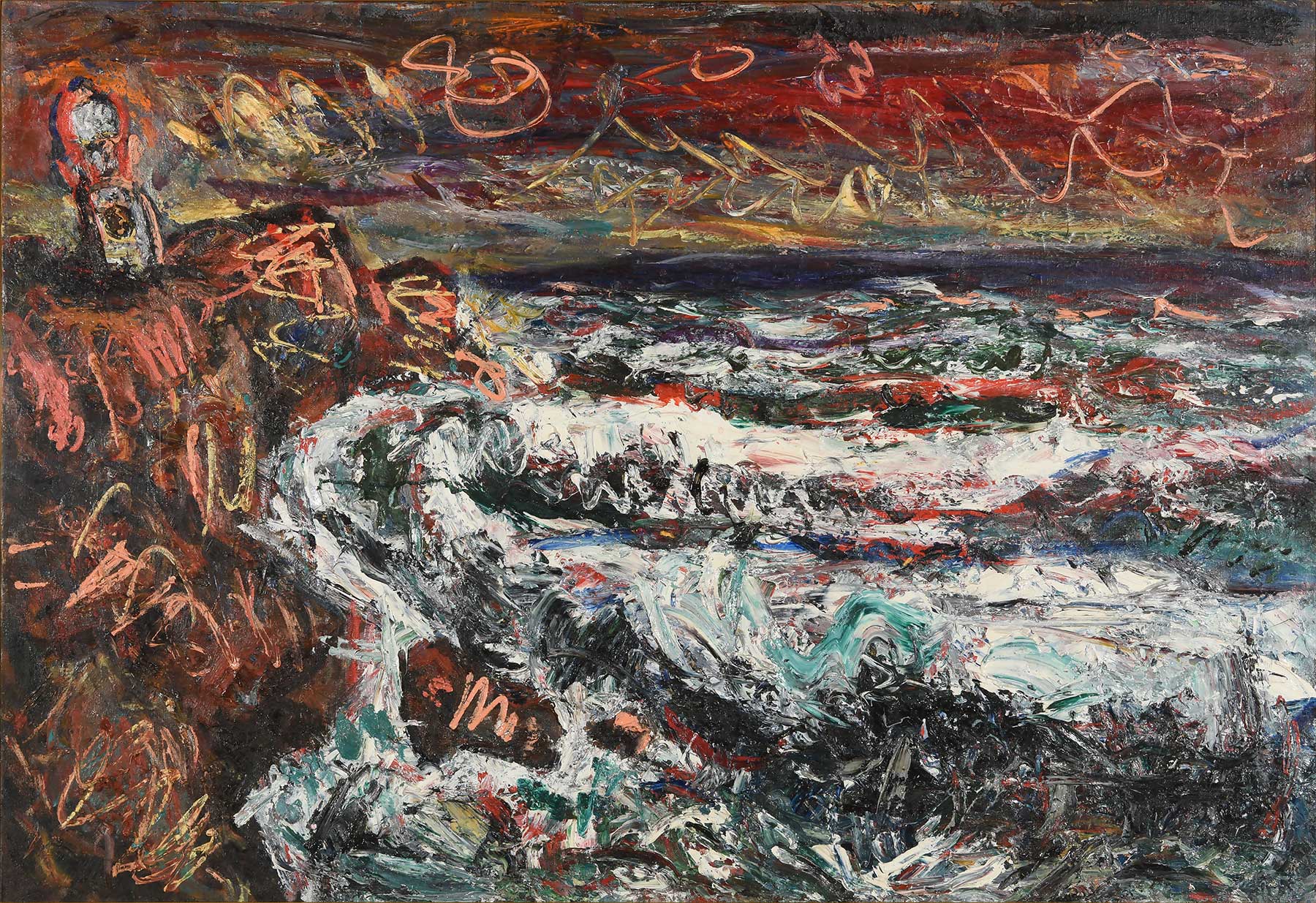
Koizumi Kiyoshi | Umi (Sea) | 1961 | oil painting, canvas | Lafcadio Hearn Memorial Museum
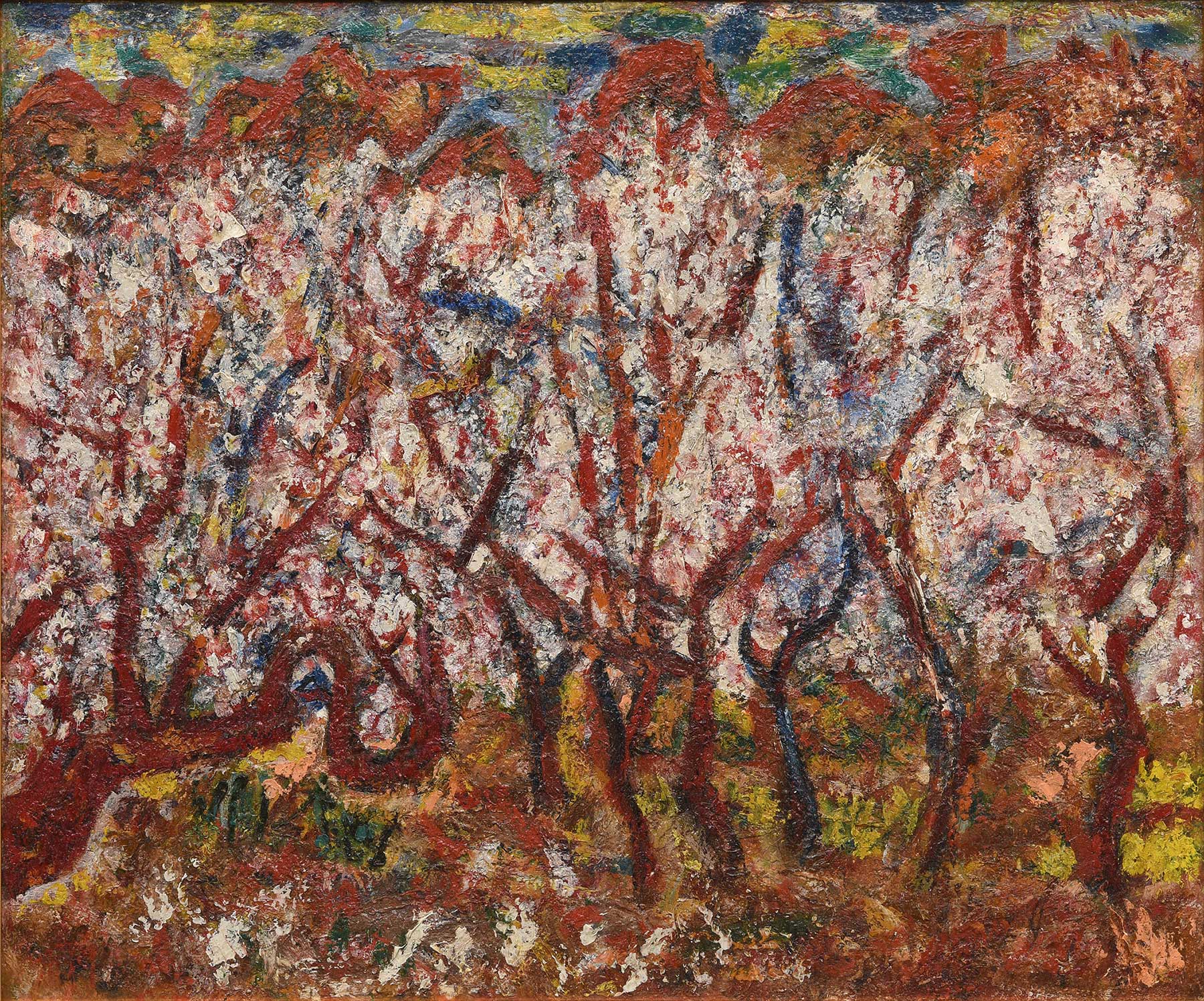
Koizumi Kiyoshi | Bairin (Plum grove) | 1947 | oil painting | Lafcadio Hearn Memorial Museum
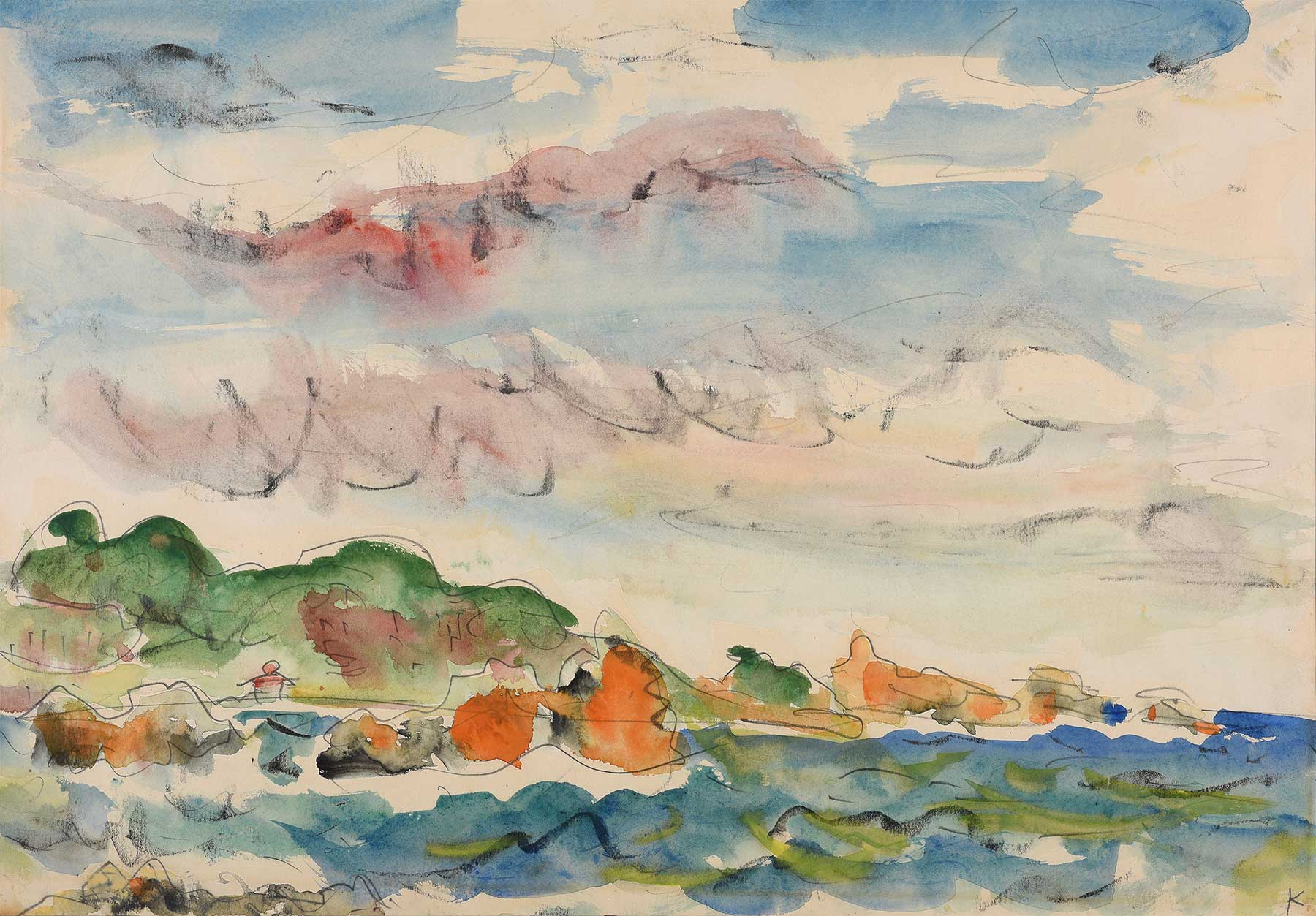
Koizumi Kiyoshi | Niemonjima (Niemon Island) | 1950 | watercolour | Lafcadio Hearn Memorial Museum
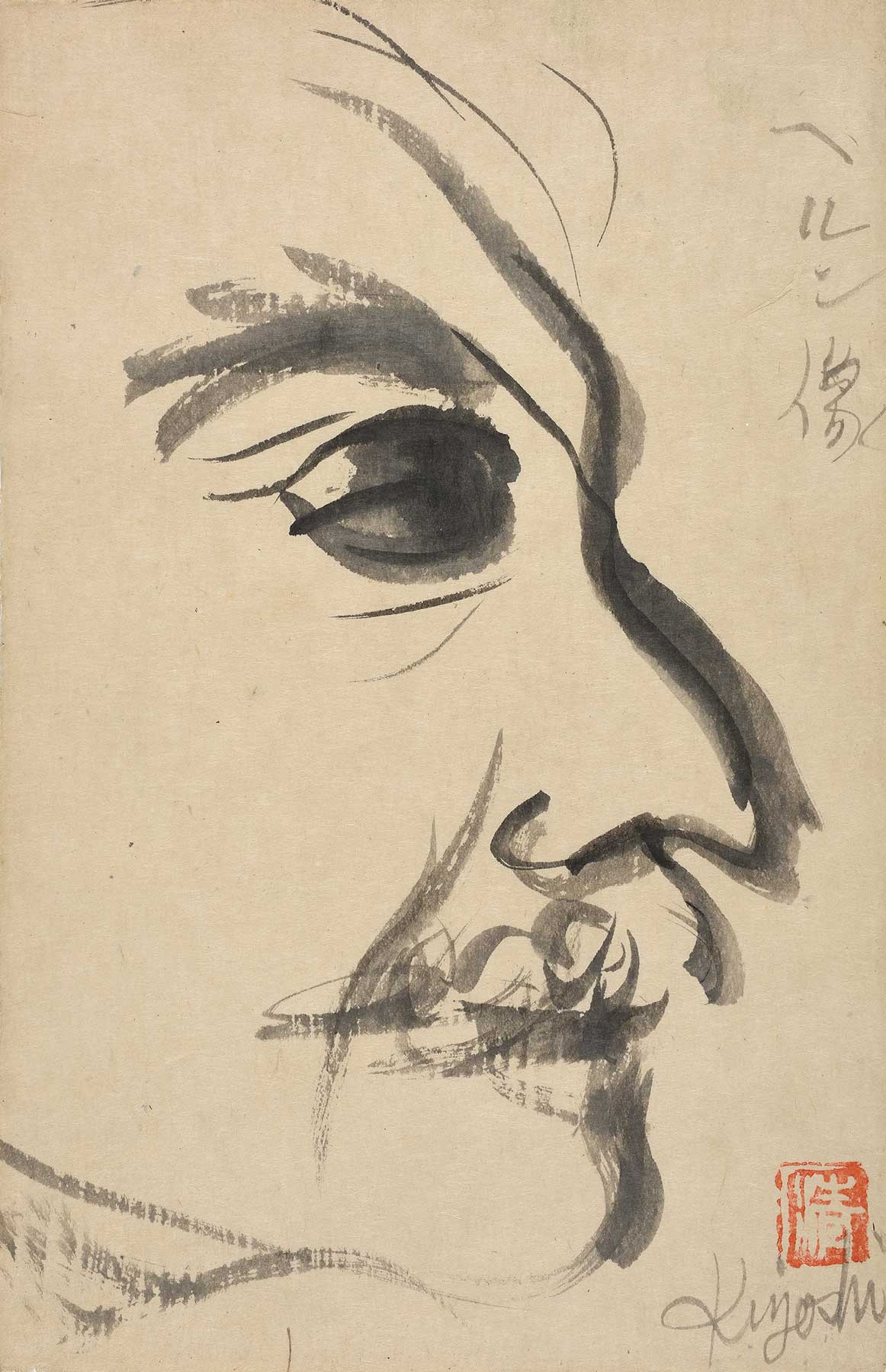
Koizumi Kiyoshi | Portrait of Hearn (facing left) | 1950 | ink | Lafcadio Hearn Memorial Museum
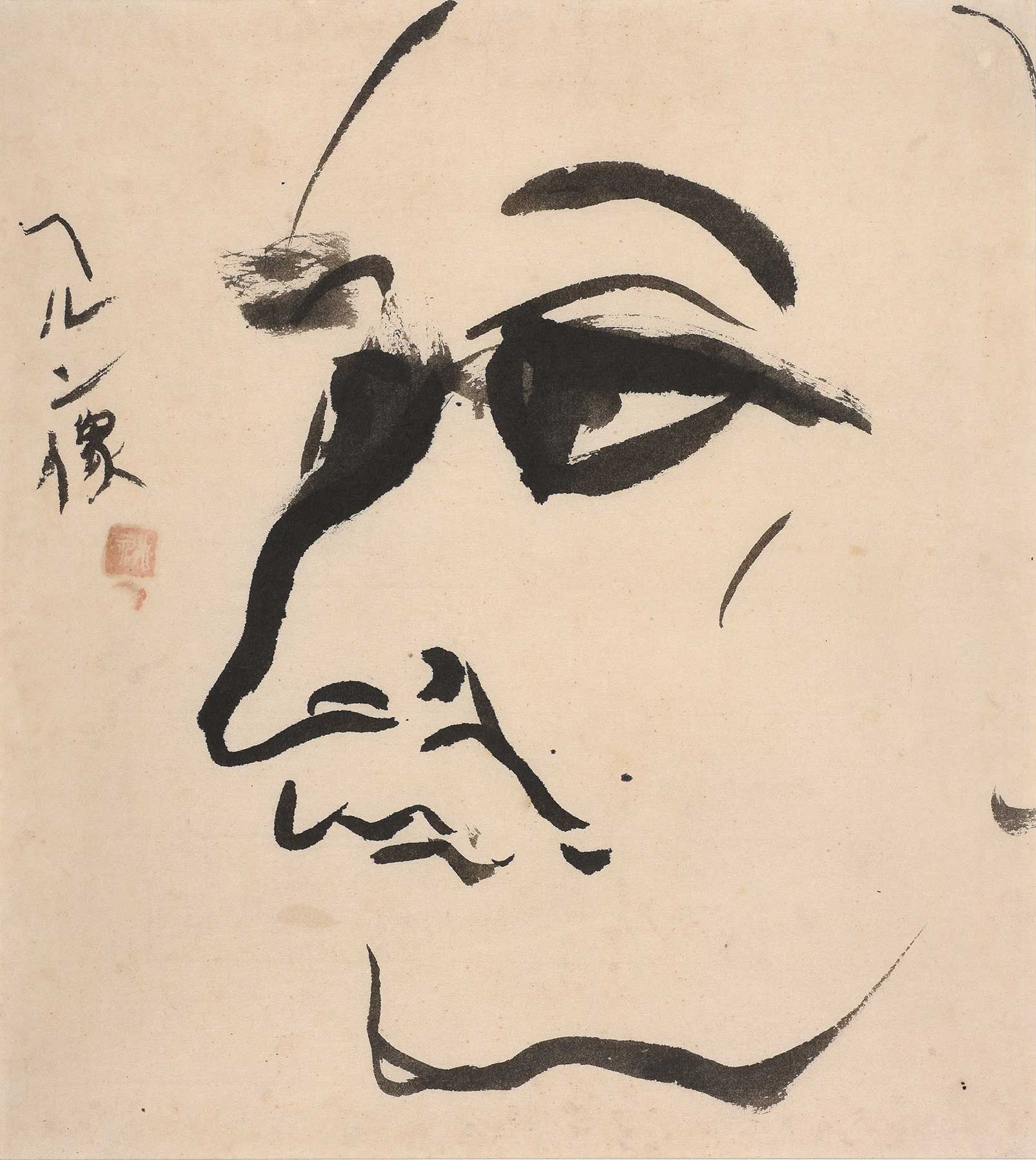
Koizumi Kiyoshi | Portrait of Hearn (facing right) | 1950 | ink | Lafcadio Hearn Memorial Museum
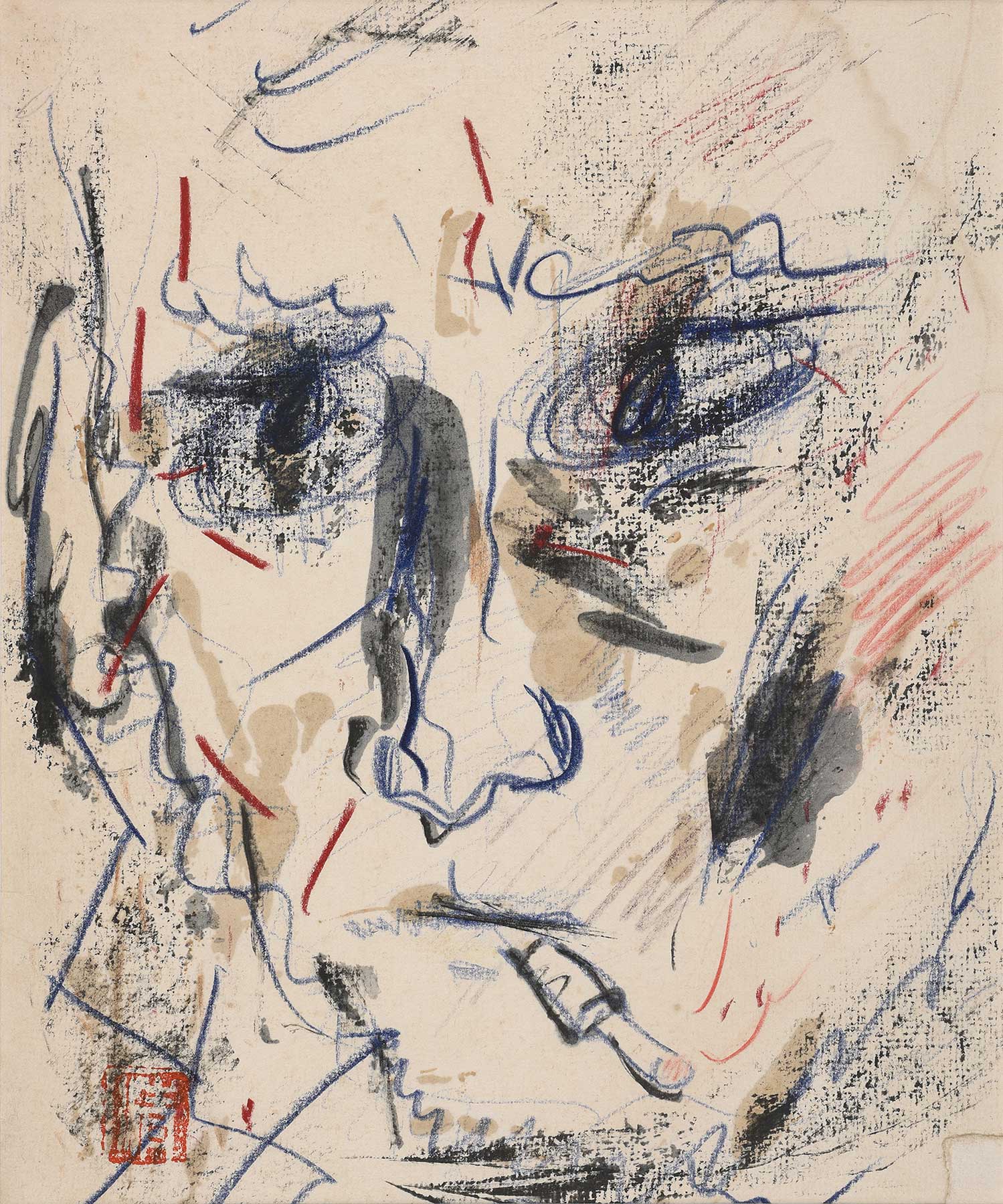
Koizumi Kiyoshi | Self-portrait | date unknown | coloured pencils, ink | Lafcadio Hearn Memorial Museum
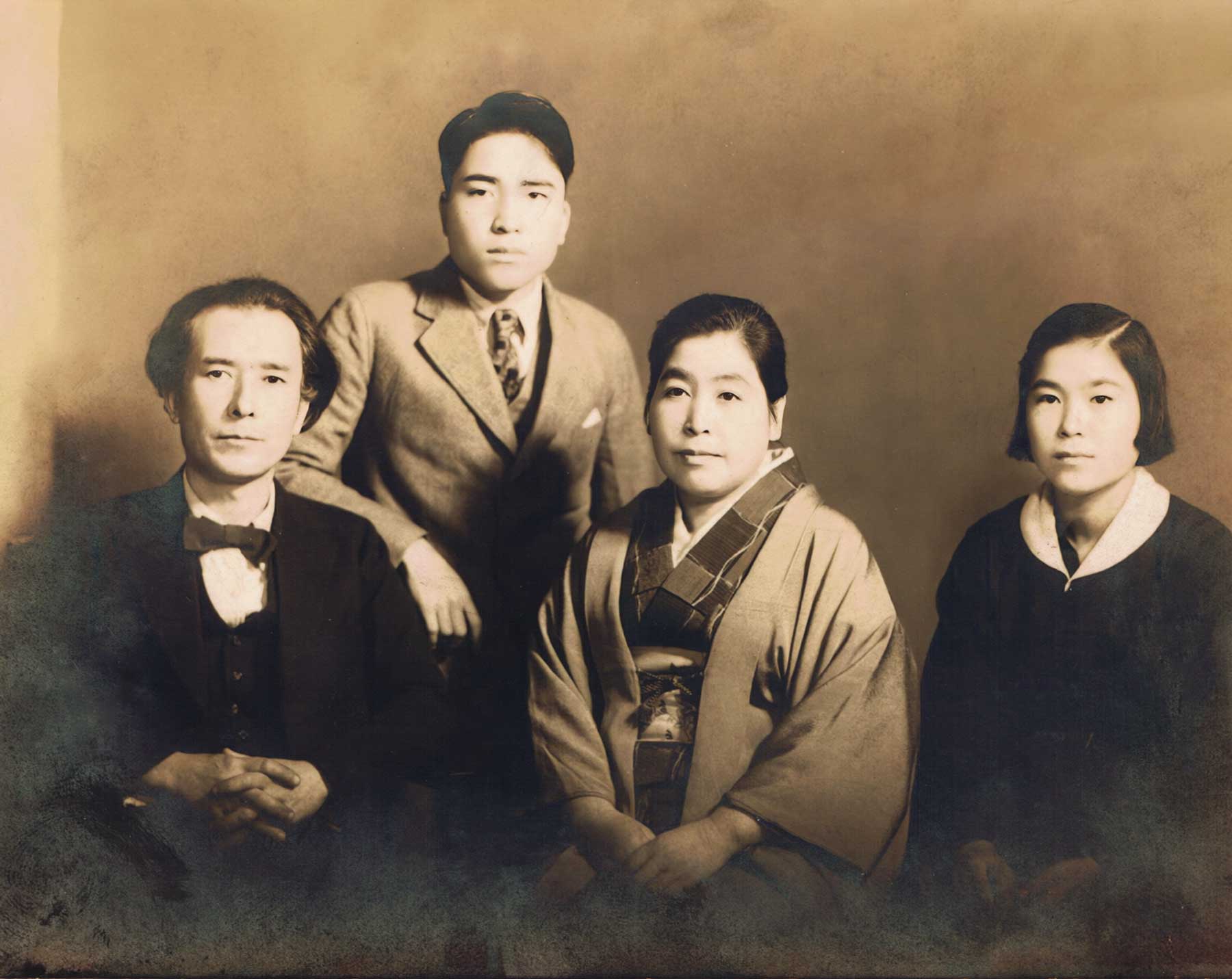
Kiyoshi and his family | Private collection
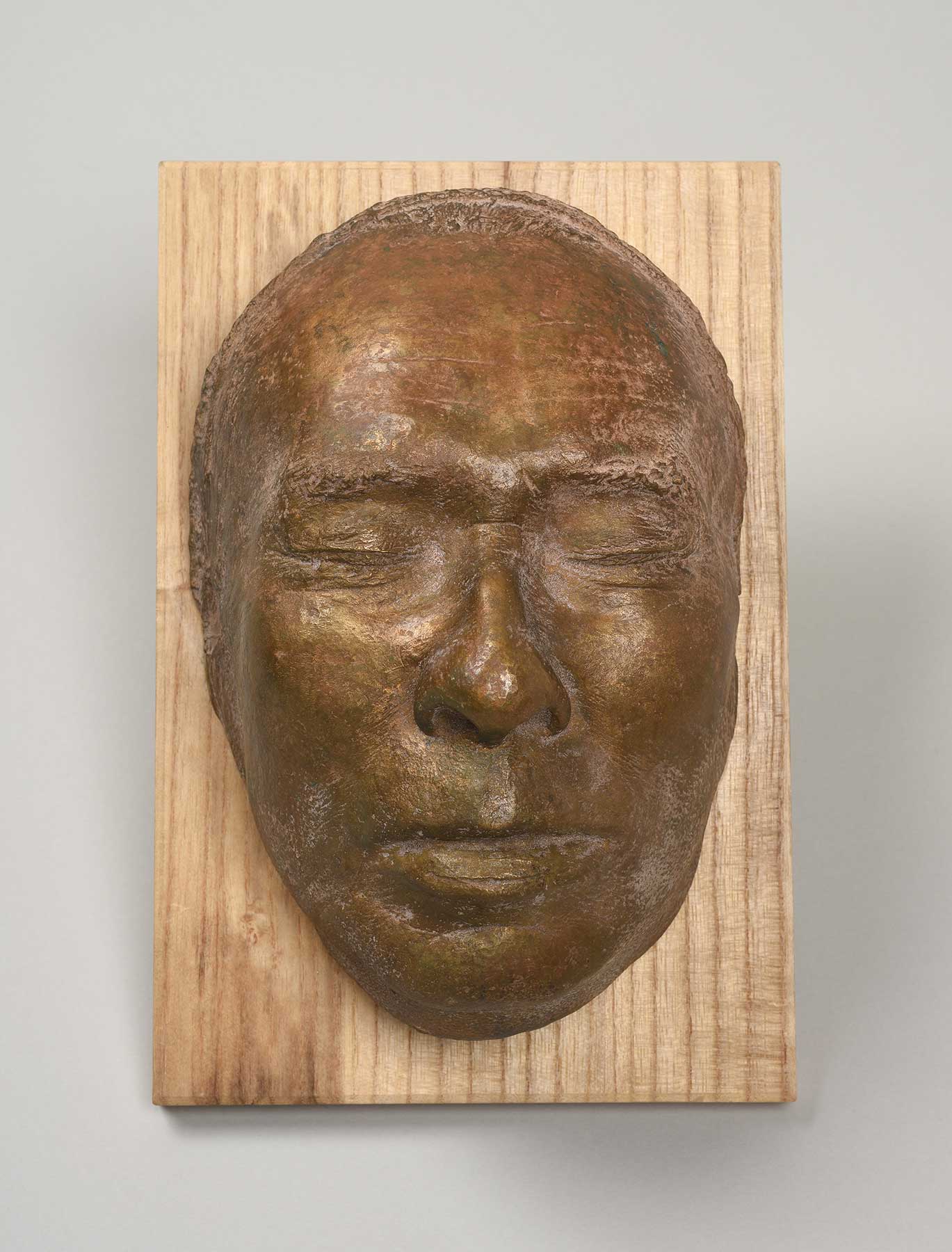
Koizumi Kiyoshi death mask | Shimane Art Museum
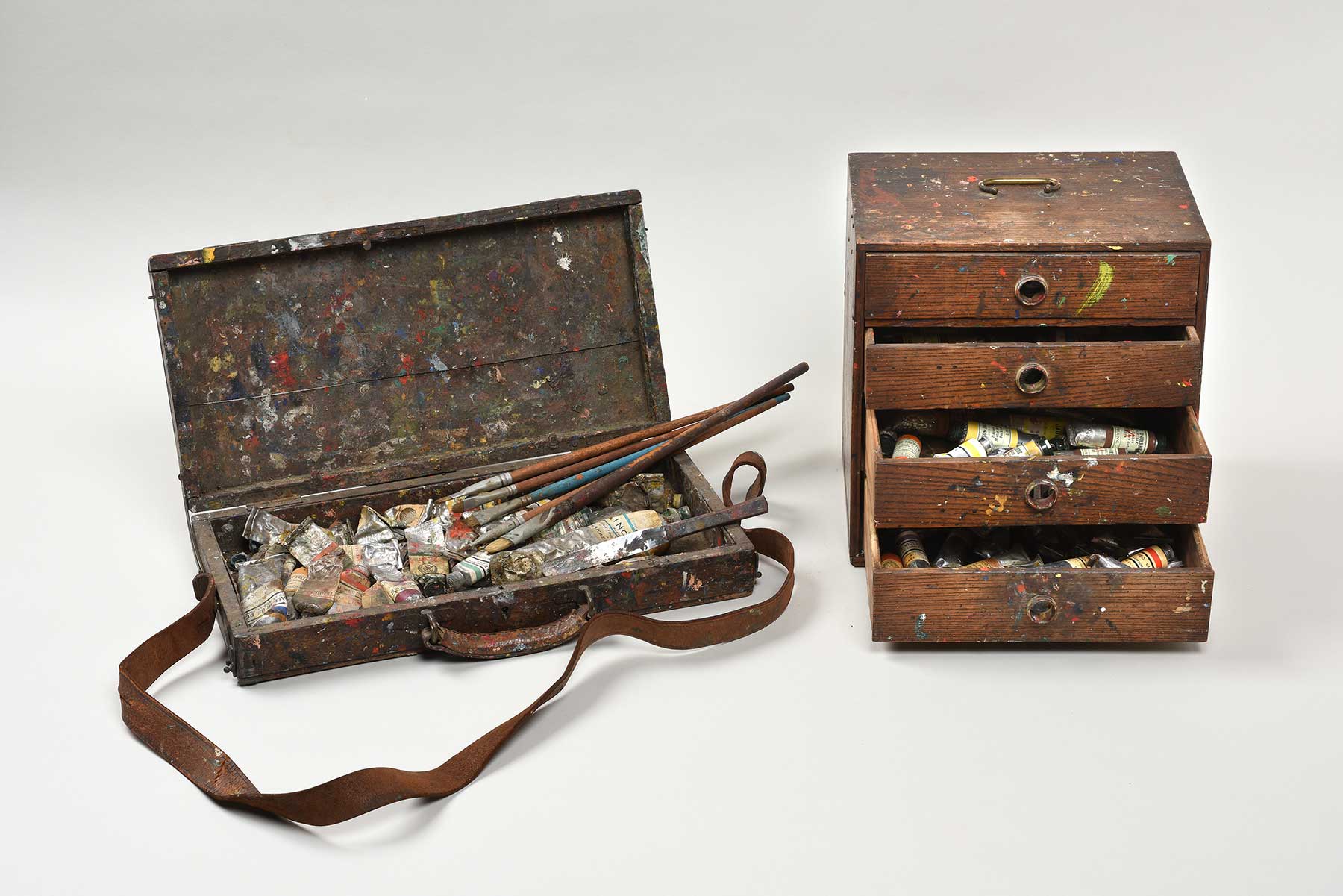
Beloved art equipment | Shimane Art Museum
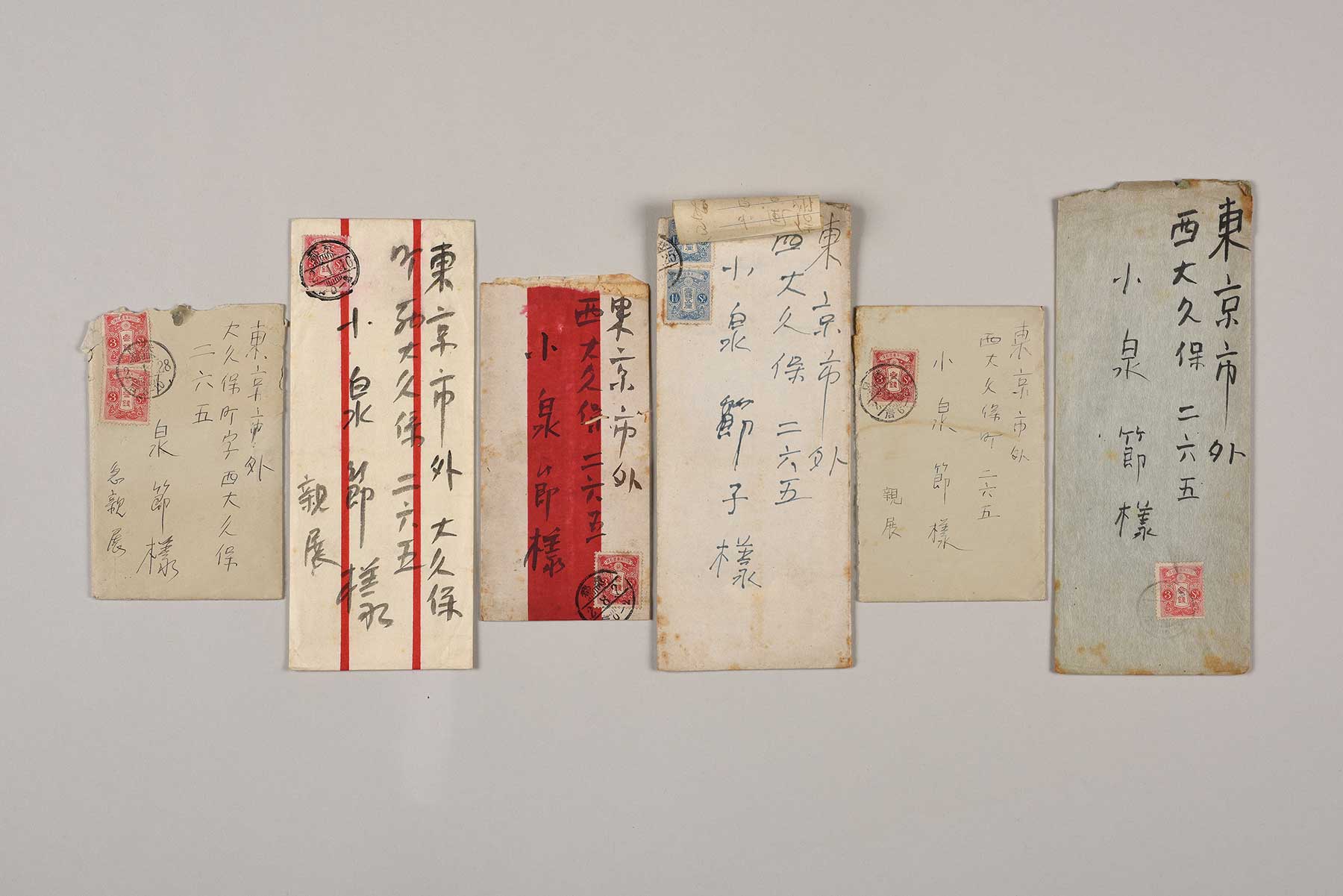
Letters to his mother Setsu | Ikeda Art Museum
主要参考文献
- 小泉清「我がゴッホ」『アトリヱ』305号、1952年
- 小泉清「朝井閑右衛門氏アトリエ訪問」『美術手帖』No.56、1952年
- 『小泉清画集』求龍堂、1973年
- 後藤昂「小泉清の死」『へるん』20号 八雲会、1983年
- 『小泉清画集』恒文社、1989年
- 小泉時著『ヘルンと私』恒文社、1991年
- 図録『小泉清 父・八雲とともに』町立久万美術館、1992年
- ワシオ・トシヒコ編著『画家・小泉八雲の肖像』恒文社、1995年
- 小泉一雄「父「八雲」を憶う」『小泉八雲』恒文社、1995年
- 椎名駿輔「會津八一と小泉清」『へるん』33号 八雲会、1996年
- 図録『朝井閑右衛門と仲間たち展』平塚市美術館、1997年
- 『小泉八雲事典』恒文社、2000年
- 風呂鞏「へるんの常宿“いなばや”に残る小泉清の絵」『へるん』41号 八雲会、2004年
- 図録『早稲田をめぐる画家たちの物語』早稲田大学會津八一記念博物館、2012年
- 「国画会展覧会略史」『第97回国画会絵画部図録』国画会絵画部、2023年
